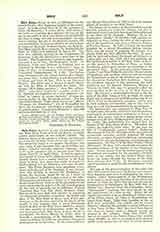

Holy Name, FEAST OF THE, is celebrated on the second Sunday after Epiphany (double of the second class). It is the central feast of all the mysteries of Christ the Redeemer; it unites all the other feasts of the Lord, as a burning glass focusses the rays of the sun in one point, to show what Jesus is to us, what He has done, is doing, and will do for mankind. It originated towards the end of the fifteenth century, and was instituted by the private authority of some bishops in Germany, Scotland, England, Spain, and Belgium. The Office and the Mass composed by Bernardine dei Busti (d. 1500) were approved by Sixtus IV. The feast was officially granted to the Franciscans February 25, 1530, and spread over a great part of the Church. The Franciscans, Carmelites, and Augustinians kept it on January 14; the Dominicans January 15 At Salisbury, York, and Durham in England, and at Aberdeen in Scotland it was celebrated August 7, at Liege, January 31, at Compostela and Cambrai, January 8 (Grotefend, “Zeitrechnung”, II, 2, 89). The Carthusians obtained it for the second Sunday after Epiphany about 1643; for that Sunday it was also extended to Spain, and later, December 20, 1721, to the Universal Church. The Office used at present is nearly identical with the Office of Bernardine dei Busti. The hymns “Jesu dulcis memoria”, “Jesu Rex admirabilis”, “Jesu decus angelicum”, usually ascribed to St. Bernard, are fragments of a very extensive “jubilus” or “cursus de aeterna sapientia” of some unknown author in the thirteenth century. For the beautiful sequence “Dulcis Jesus Nazarenus” (Morel, “Hymnen des Mittelalters”, 67) of Bernardine dei Busti the Franciscans substituted a prose sequence of modern origin: “Lauda Sion Salvatoris”; they still celebrate the feast on January 14
FREDERICA G. HOLWECK


